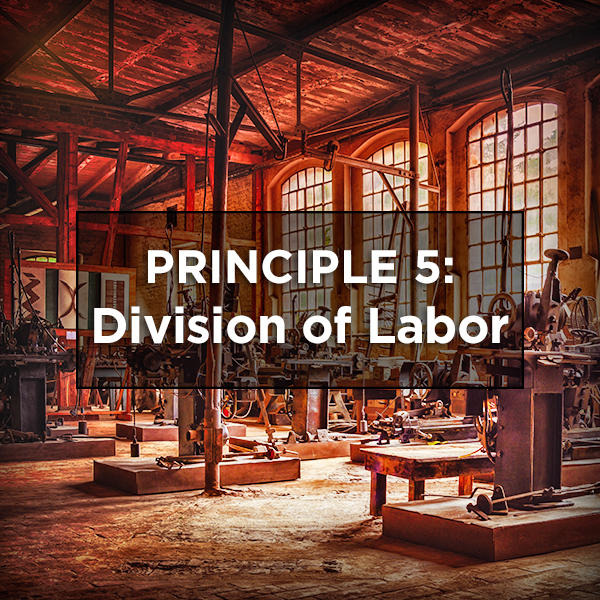Your cart is currently empty!
For just as the body is one and yet has many parts, and all the parts of the body, though they are many, are one body, so also is Christ. For by one Spirit we were all baptized into one body, whether Jews or Greeks, whether slaves or free, and we were all made to drink of one Spirit. For the body is not one part, but many. If the foot says, “Because I am not a hand, I am not a part of the body,” it is not for this reason any less a part of the body. And if the ear says, “Because I am not an eye, I am not a part of the body,” it is not for this reason any less a part of the body. If the whole body were an eye, where would the hearing be? If the whole body were hearing, where would the sense of smell be? But now God has arranged the parts, each one of them in the body, just as He desired. —1 Corinthians 12:12-18
In last month’s study of the Twelve Master Principles, we talked about Principle Four: Service-Based Power as the ultimate foundation of any government seeking integrity, legitimacy, and capital creation. This month’s Principle Five: The Division of Labor (Engiftment & Efficiency) is a similar, ultimate foundational concept; no organization can maximize the possibility of its success without building itself upon this core principle. Indeed, recognizing the different skills and engiftments of people, and placing them in the organization where their gifts are most highly leveraged, is the essential ingredient leading to organizational efficiency and productivity.
We begin with the need to examine two major subjects: 1) the issue of inherent design, and 2) that the principle of the division of labor is arguably the primary principle undergirding the existence of modern economics.
Inherent Design & Assigned Labor
For we are His workmanship, created in Christ Jesus for good works, which God prepared beforehand so that we would walk in them. —Ephesians 2:10
Inherent design is a fact which shows up on multiple levels within the material universe. The interconnectedness of our material reality, both living and inert, is scientifically irrefutable. It is all connected. Through these multiple, unified patterns connecting out of their inherent special designs, “things work.” Symmetry, polarity, male and female, opposites attracting, and a host of other examples all speak to things fitting together out of their strengths and deficiencies, coupling together to create wholeness and completion.
The above quote from Ephesians 2:10 specifically deals with the phenomenon we call “assigned labor.” Assigned labor refers to the biblical reality that God our Creator endowed us all with specific skills, temperaments, and physical and intellectual assets tailor-made to fit perfectly into the work He has chosen for each of us. Our quest then becomes the journey of perceiving these assets and patterns which lead into what we were made and fitted to do. God’s programming of our DNA even affects the types of personalities He designed us to be compatible with as we engage in complementary labor. As many of you know, the Hebrew word for labor, avodah, is also used to denote worship. When we are doing what we were created to do, our inherent design is aligned with the joy of thanksgiving to Him for life, freedom, and purpose.
Teamwork & Mutual Need
Having “pieces and parts” that fill in each other’s “pieces and parts” recognizes the reality that teamwork is the practice and art of multiple assets working in harmony to fill multiple needs. Teamwork is correctly putting together our Maker’s pieces of the puzzle to create a beautiful picture or a function perfectly fitted for a task. None of us are as smart as all of us, and “we” is multiple times more powerful than “me.” Instead of complaining that other people can do better so many things we cannot do, celebrating the division of labor turns our disappointments into an orchestrated symphony.
Modern Economics & Competitive Advantages

The concept and application of the division of labor is the key idea responsible for what we call “modern economics.” It began when numbers of people, beginning in local/home agricultural labors, saw the benefit of concentrating their efforts into growing large quantities of a single crop rather than small amounts of varied crops. Because of repetitive efficiencies, unit prices dropped. Farmer John made so much more return on volume sales, that he could not only buy other peoples’ products for his own needs, but he also had discretionary funds left over for savings, higher living standards, or capital investments. The economic laws of mass product efficiency, lower unit prices, increased market share, and the possibility of growing competitive advantages turned our farmer friend into an enlightened entrepreneur. Once names were applied to these economic principles, his marketing passion increased, and many “Farmer Johns” began to see these truths invested into the realm of manufacturing. All that was left to add to this economic “miracle” were leveraged investments and currencies, and modern economics was here to stay!
Much more could be said, but I trust we can agree that the principle of the Division of Labor deserves a very high position on the enumerating of major ideas that change lives, nations, cultures, and civilizations. May this knowledge continue to be recognized, taught, used, and increased for the advancement of God’s Kingdom. And that is, as should be…
THE BOTTOM LINE.
Questions for Reflection & Discussion:
- How can you communicate and activate the division of labor principle in your family?
- What efficient task do you practice regularly that models this principle?
- When were you first introduced to this principle, and have you shared it with others?
This article is part of a broader series on the TWELVE MASTER PRINCIPLES. View previous issues at: THE BOTTOM LINE ARCHIVES
